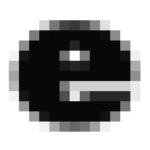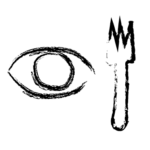
Sketches and experiments
Typography students were asked to create a visual configuration by inventing a combination of letterforms from the alphabet. By investigating proportions, weights, counter-forms, and other shape relationships, students gain an increase awareness of the physical aspects of letters as forms. This use of typography joinery creates a visual gestalt (a physical, biological, psychological, or symbolic configuration or pattern of elements so unified as a whole that its properties cannot be derived from a simple summation of its parts). Students begin to understand the variety of spatial relationships that can exist among typographic characters.













These type of assignments offer an opportunity to talk to students about the historical aspects of our language and the history of our alphabet. How did our letters come to be? How did the letter “A” ever develop into the form we know today? The form of the letter A is thought to derive from an earlier symbol resembling the head of an ox. One can trace the history of the Arabic letter A back to Egyptian hieroglyphic writing (1) and the symbol for the ox. This symbol gave way to early Semitic writing at about 1500 BCE on the Sinai Peninsula (2). About 1000 BCE, in Byblos and other Phoenician and Canaanite centers, the ox sign became more linear (3) and looks like another of our current letters in the English alphabet. The name of the letter A in Phoenician and the Semitic language resembles the Hebrew name aleph meaning “ox”. Upon the ascendency of Greek civilization, the Greeks used the sign for the vowel a, changing its name to alpha. The Greeks used several forms of the sign, including the ancestor of the form that we are familiar with today (4). The Romans incorporated this sign into Latin. The English, whose language was influenced from Latin, first took the shape of the small a in Greek handwriting (5) and made it similar to the present capital letter. About the 4th century CE this was given a circular shape with a slanted projection (6). This shape was the parent of both the English handwritten character (7) and the printed small a (8).
The history of many of our letters come from certain meanings and sounds and then became marks which developed into symbols and letters. The history of all out letters is a connection between the verbal and the visual.



